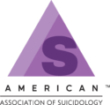Suicide and Life-Threatening Behavior Special Issue
Posted on
Call for Submissions: Public Health Approaches to Suicide Prevention
Co-Editors: Bruce E. Crow, Psy.D., Department of Psychiatry and Behavioral Sciences, University of Washington School of Medicine; Robert J. Cramer, Ph.D., Associate Professor & Belk Distinguished Scholar, University of North Carolina at Charlotte
Number of articles: 10-15
Open Date: October 21, 2019
Submission Deadline: February 29, 2020
Suicide is widely recognized as an important public health problem. Public health approaches and social-ecological models of suicide conceptually shape many state and national level suicide prevention strategic plans. However, there is less understanding and application of public health approaches to suicide prevention compared to clinical interventions. Public health approaches exist (e.g., gate-keeper training, pertinent policies); however, further research is needed to build a robust empirical and theoretical base to public health approaches to suicide prevention. In response to this need, the American Association of Suicidology (AAS) recently created a Public Health Committee to continue efforts toward developing the science, theory and practice of public health approaches to suicide prevention.
This Suicide and Life-Threatening Behavior special issue aims to provide a platform for empirical and other public health suicide prevention advancements. The requirement for fit with the special issue is articulation, demonstration, or testing of a public health approach to suicide prevention. Example topics of interest include, but are not limited to:
- Evaluation (e.g., feasibility, pilot study) of multi-level suicide prevention approaches.
- Application of existing population-based (e.g., policy analysis, community advocacy) or systemic (e.g., Zero Suicide, gate-keeper training) approaches to local, state, national or cross-national contexts.
- Examination of suicide prevention strategies/programs in vulnerable populations (e.g., school-aged youth, immigrants, military).
- Investigation of comparative studies of suicide prevention risk and protective factors.
- Evaluation of public health measurement in suicide prevention.
- Assessment of population level approaches to identifying persons at-risk across settings (e.g., universal screening in primary care or workplace).
- Empirical study of public health policies impacting suicide-related outcomes.
- Studies that add evidence to or refine public health suicide prevention theories or further distinguish public health suicide prevention from clinical interventions.
Submission Instructions:
All submissions must adhere to the Suicide and Life-Threatening Behavior Guide for Authors. Authors should prepare two versions of their submission: one with author information included and one blinded copy for peer review. Submissions should be sent with a cover letter to SLTBPH1@gmail.com.
Email inquiries can be sent to special issue Co-Editors at SLTBPH1@gmail.com.
Related Blogs
To the AAS Community
Washington, D.C., October 23, 2025- To the AAS Community: As many of you already know, Jody Gottlieb passed away unexpectedly on October 1, 2025. In the immediate aftermath of this sad and shocking news, we focuse...
Honoring the Life and Legacy of Jody Gottlieb
Washington, D.C., October 3, 2025- It is with profound sadness that we share the unexpected passing of Jody Gottlieb due to an unexpected medical condition. Jody was not only an accomplished professional, but also a...
AAS Rejects Coercive Mental Health Policies That Put Lives a...
Washington, D.C., July 25, 2025- The American Association of Suicidology (AAS) began more than 55 years ago with a simple but profound belief: suicide is preventable. But preventing suicide takes more than puni...
